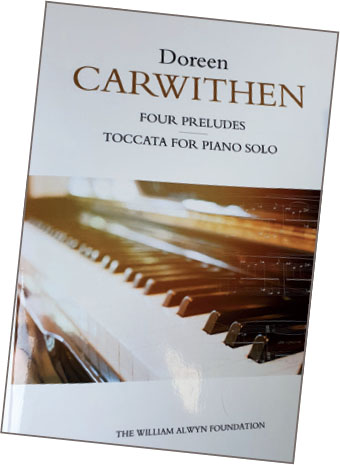
Karl Jenkins: Piano
This is the latest release from Decca, consisting of 16 transcriptions from the choral works made familiar by the airwaves of Classic FM, together with three instrumental transcriptions and new works for solo piano. In the preface to Boosey & Hawkes’ print folio of the transcriptions of the same name, Jenkins self-effacingly describes his background as an oboist who occasionally plays ‘arranger's piano’. His wife helped out on the recording by playing in some of the high notes, and his son produced and engineered the master recording. Whatever the division of labour across the family, house Jenkins produces a satisfying showcase of pastel-shaded gems.
The arrangements quickly dispel any notion of an arranger-pianist – these versions sit naturally and comfortably under the hand without falling into the trap so common amongst orchestral transcriptions of stride-left hand and washy sustain pedal. The real test of the arranger's art is not in the longingly slow arcs of the ‘Benedictus’ from The Armed Man: A Mass for Peace or ‘In paradisum’ from Requiem, but in how to translate the pulsing entho-orchestral rhythms of ‘Adiemus’ and ‘Canción plateada’ to the piano. Rather than trying to mirror the sound of the unique orchestral palate which Jenkins employs, his transcriptions make these titles indisputably the piano's own – it's hard to believe that they were ever envisaged for any other timbre than the close mic-ed richness of Jenkin's piano.
As with all Boosey publications, the simple but evocative cover hides a solid, carefully edited and well-built publication, which will see performers through their musical journey and beyond. Editorial markings are supportive and useful guidance, rather than fussy additions, and the careful spacing and layout make this a publication which you will be happy to spend many hours with. ‘White Water’ is a particularly fine example of this – the intricate layers of sonority reach out from the page and make the performer want to dive in. Slow arches of underwater sound ebb and flow toward the final jazz-shaded conclusion. Likewise, ‘Quirky Blue’ falls off of the ivory pages and under the fingers of performer.
For fans of Jenkins’ popular output, there are hours of fun to be gained from the accessible but effective transcriptions contained in this folio. The particular surprise for me was in Jenkins’ original piano compositions, which demonstrate not only an affinity for piano writing, but a control of structure and design which left me hoping that this is not the last solo piano album from the house of Jenkins.

Four Preludes and Toccata for Piano Solo
William Alwyn is a name familiar to most devotees of British music. Less so that of his wife, Mary, formerly know (confusingly) as Doreen Carwithen. Much energy has been devoted to Alwyn's legacy over the last few years, including the establishment of an archive at Cambridge University, an excellent and diverse summer festival in the village of Blythburgh, and a number of recordings from Chandos and Somm Recordings. I was slightly shocked to discover that Alwyn's wife was a successful composer in her own right, and almost as prolific in the then emerging field of film scoring.
Doreen Carwithen had a number of early career successes after graduating from the Royal Academy of Music in 1944: a BBC broadcast of her cello sonatina; a premiere at the Opera House conducted by Adrian Boult; and a piano concerto at the Proms in 1952. Whether this lack of sustained career is a comment on the institutional sexism of the 50s British musical establishment, or an indictment of the disposability of many contemporary commissions is open to debate. Either way, having gleaned this information from the sizable biography in the William Alwyn Foundation's new edition of Carwithen's Four Preludes and Toccata for Piano Solo, I was expecting something special when I turned the page. I was not disappointed.
The preludes date from 1950, written while Doreen (then Mary) was working for a film studio producing a steady stream of scores. It would be easy to say that the music is cinematic, and while it does have an engagingly narrative quality, there is something altogether more pianistic about this set. The opening nocturne flows with a warm fin de siècle harmony almost like the opening of Ravel's ‘Le tombeau de Couperin’. The ghost of a melody is drawn out of a web of delicately woven lines, fading away into a ghostly ether. The set is concluded with a nostalgia-tinged march evocative of the organ works of Vaughan Williams or Kenneth Leighton. Small cells of motif spark together before bursting alight with a virtuosic blaze. This collection, while not for the faint-fingered, does reward the effort put in by the performer with a rich body of musical treasures.
The toccata which rounds off this collection simmers like a cauldron of repeated notes. Driven forward on this tide of motivic energy, there is a distinctly filmic momentum to this early masterpiece. Like a strand of DNA, the figures twist in and out of each other, growing organically towards the final climactic flourish. This short jewel would make a tantalising encore to a recital, or to wrap up a disc of contemporary piano music.




